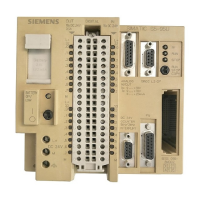S7-1200 Functional Safety Manual
Manual, 02/2015, A5E03470344-AA
199
A functional safety architecture with no redundancy. The safety function requires 1 out of 1
provided signal/logic channels for implementation. A single dangerous fault results in
dangerous loss of the safety function.
A functional safety architecture with two channels. The safety function requires 1 out of 2
provided signal/logic channels for implementation. The safety function is still fulfilled in the
presence of a dangerous fault in one channel.
Fail-safe systems must be protected from dangerous, unauthorized access. Access
protection for F-Systems is implemented through assignment of two passwords (for the fail-
safe CPU and the safety program).
Field device that converts the electrical signal from the PLC into an action of controlled
machinery. In this manual, the term can include interposing contactors and relays that
control machinery, as well as directly connected motors or solenoids.
Category according to EN ISO 13849 defines architectural requirements for functional safety.
The products in this manual can fulfill Category 2 to Category 4. Category 4 requires that no
single fault can be dangerous and no undetected accumulation of faults can be dangerous.
See also Overvoltage category.
In IEC 61508 terminology, a channel is a single signal/logic path that supports a safety
function. The definition of 1oo1 and 1oo2 above uses channel in this sense. In most uses in
this manual, a channel refers to one process value, whether implemented as 1oo1 or 1oo2.

